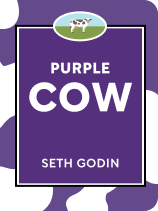

This article is an excerpt from the Shortform book guide to "Purple Cow" by Seth Godin. Shortform has the world's best summaries and analyses of books you should be reading.
Like this article? Sign up for a free trial here .
What are the five P’s of marketing? Why aren’t the five P’s working anymore?
There are actually a lot more than the five P’s of marketing. But some of the main P’s are product, publicity, pricing, and packaging.
Continue reading to learn why the five P’s of marketing aren’t enough anymore.
The Five P’s of Marketing
Traditional mass marketing runs on “the five P’s of marketing”—there are actually a lot more than the five P’s of marketing, but everyone has their 5 favorites.
Some of the P’s of marketing are:
- Product: What are you selling?
- Publicity: How will you draw attention to your product?
- Pricing: How much will it cost?
- Packaging: What will it look like?
Whichever of the five P’s of marketing you use, they’re meant to be a quick checklist to make sure that your marketing is effective and appropriate for what you’re selling. However, the five P’s of marketing aren’t enough anymore. To understand why, we need to take a quick look at the history of marketing and where we are today.
Before, During, and After the Age of Advertising
Before mass marketing, ideas (and therefore products) spread mostly by word of mouth. For example, if there was one vegetable seller in the market who had better produce than anyone else, that seller would get talked about in town and would get more business.
During the Age of Advertising, traditional mass marketing was king. The winning strategy was to put your ads in front of as many people as possible, and trust that they would want your product and be willing to pay for it. This used to be extremely effective, for a few reasons that don’t hold true anymore.
The main reason why mass marketing was so powerful was the TV-industrial complex. This term is a spin on the much-maligned military-industrial complex, and the system worked on the same kind of feedback loop: Companies would spend huge amounts of money purchasing ads. Those ads would then sell product, making profits for the companies, who then turned around and used the profits to buy more ads.
The companies with the best advertising made the most money and bought even more and better advertising. People came to believe that whatever they saw the most on TV had to be the best-quality products. If you’re doubting the power of advertising right now, think about cereal; every time you bought a box of brand-name cereal, you were paying extra money because of advertising.
However, the Age of Advertising is ending. Companies are spending millions of dollars trying to keep the loop going, and failing. One major problem is that traditional advertising is all about raising awareness for your product, but awareness isn’t enough anymore, as we’ll see.
According to marketing expert Sergio Zyman, two of Coke’s most popular commercials (“teach the world to sing” and “mean Joe Greene”) got tons of attention, but that attention didn’t translate to increased profits for Coke. Zyman had something similar to say about Kmart: Everyone knows about it, but that doesn’t mean they go there.
With the Age of Advertising coming to an end, we’re back to word of mouth advertising. However, that word of mouth is now hugely amplified by the internet and social media. The world is much more interconnected than it used to be, so ideas that catch on will spread much faster.

———End of Preview———
Like what you just read? Read the rest of the world's best book summary and analysis of Seth Godin's "Purple Cow" at Shortform .
Here's what you'll find in our full Purple Cow summary :
- Why you have to be remarkable to succeed
- How to help your business stand out
- How to leverage a single remarkable product for all it's worth






